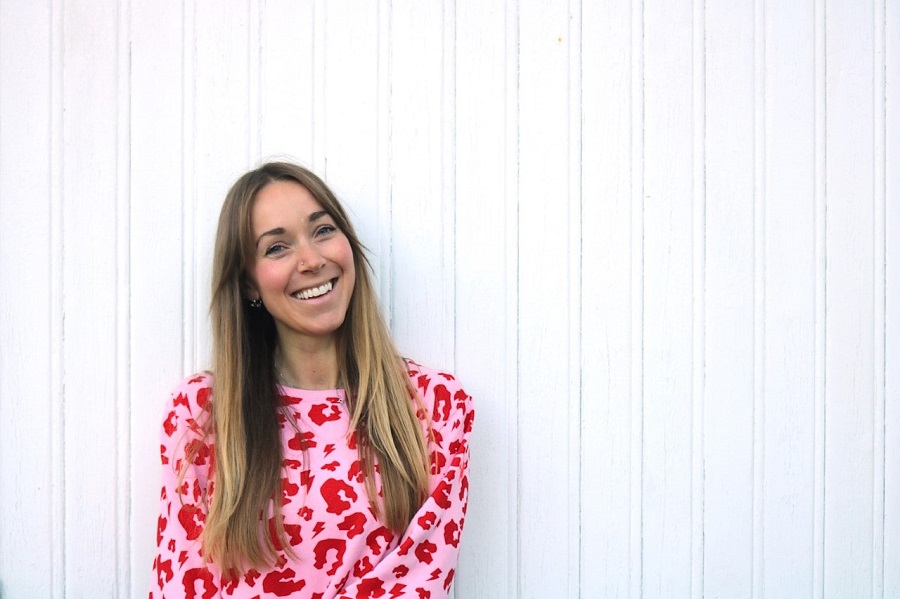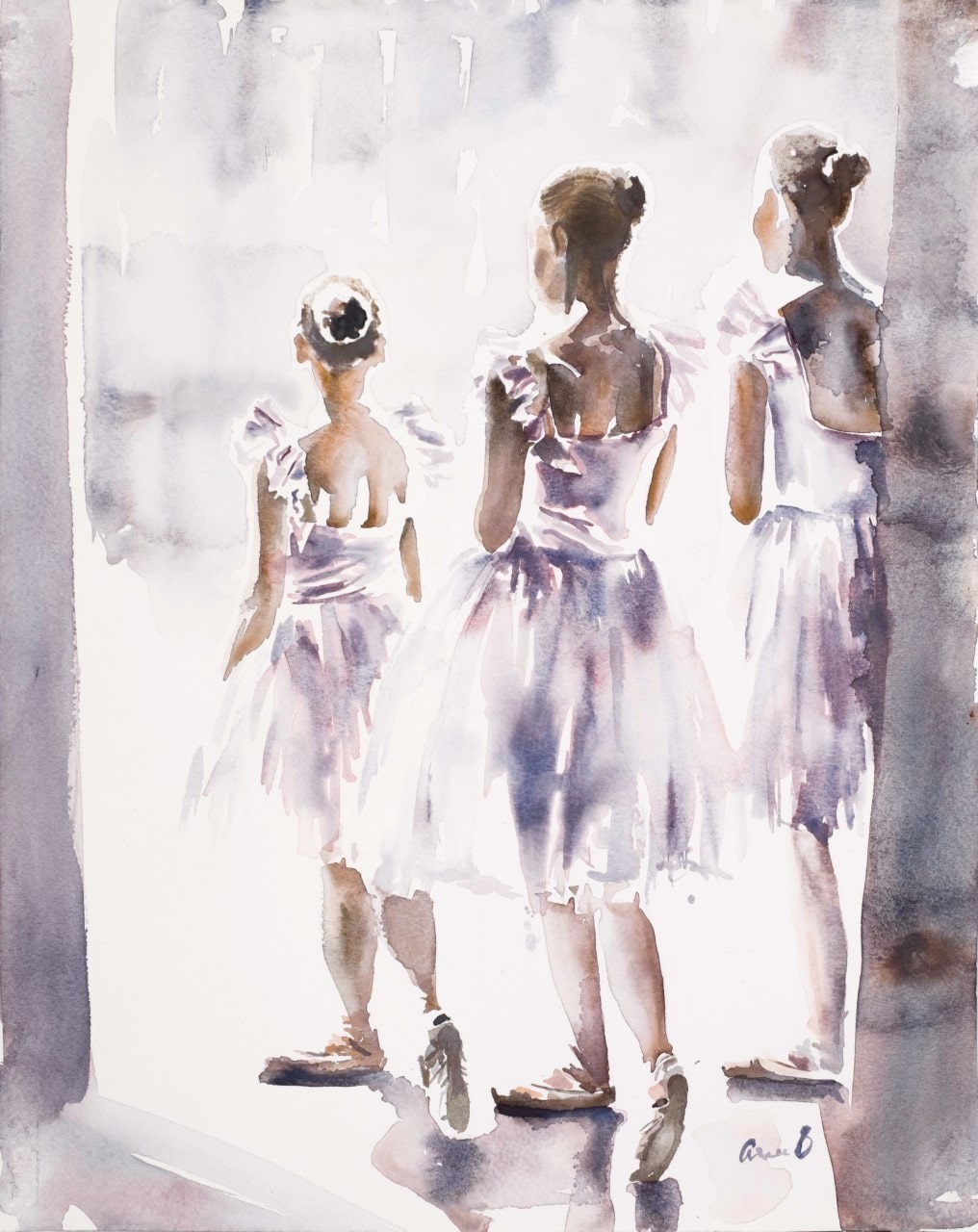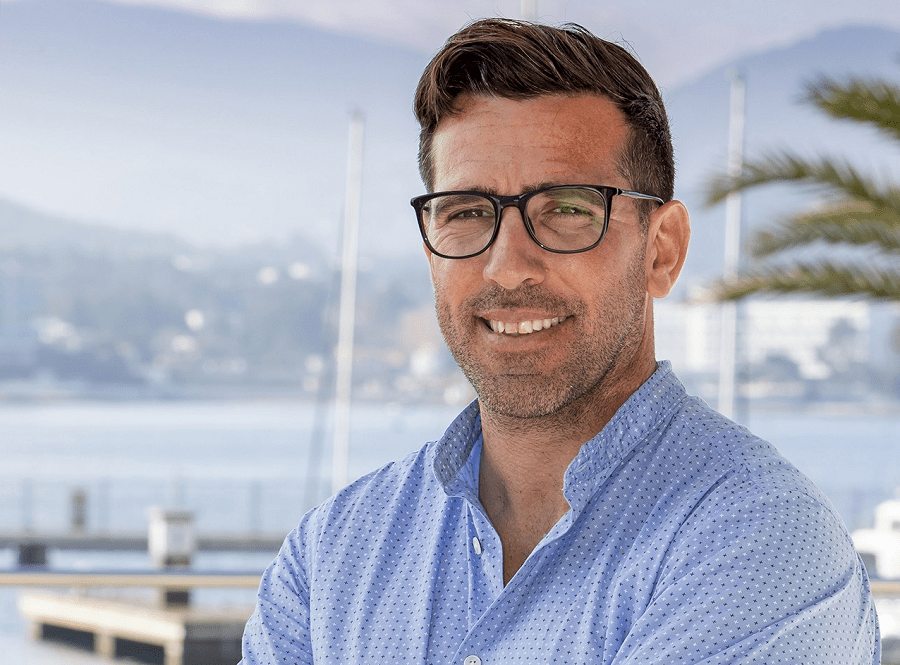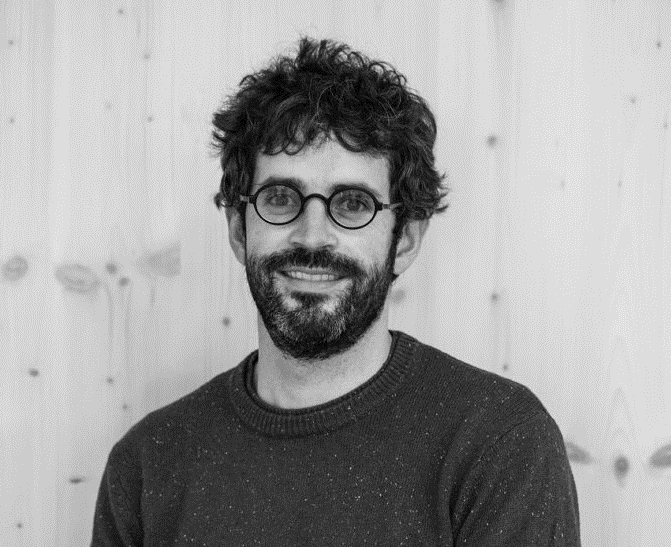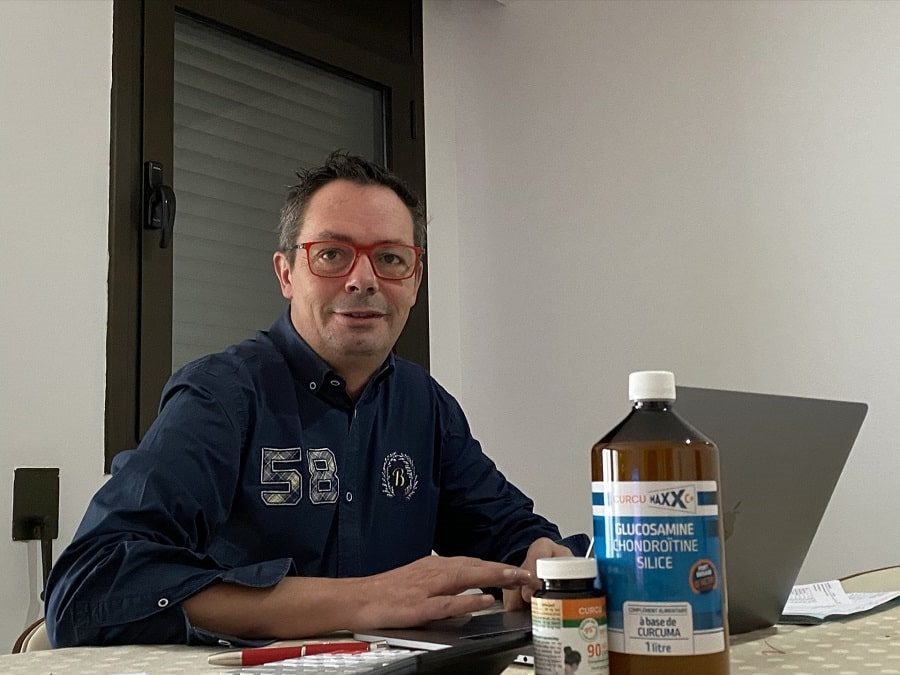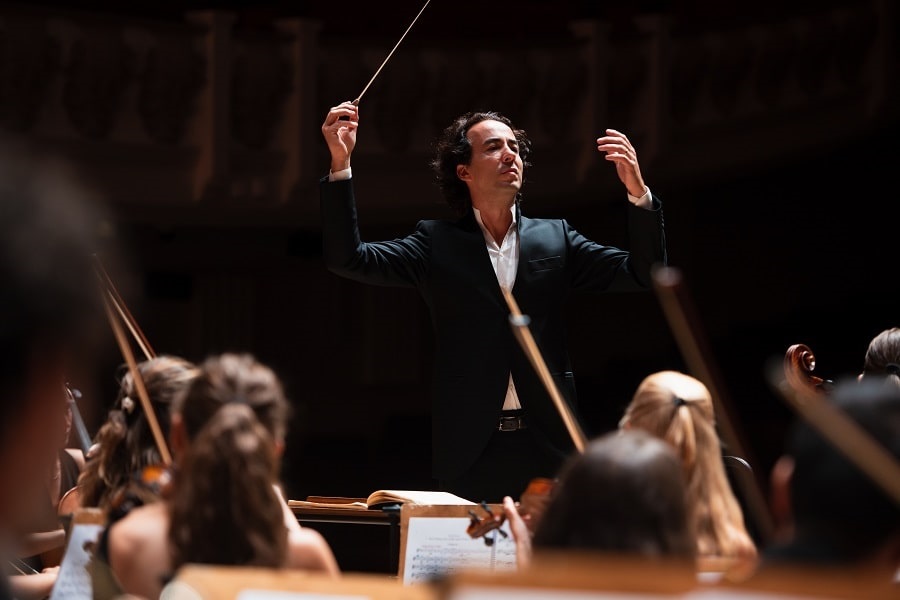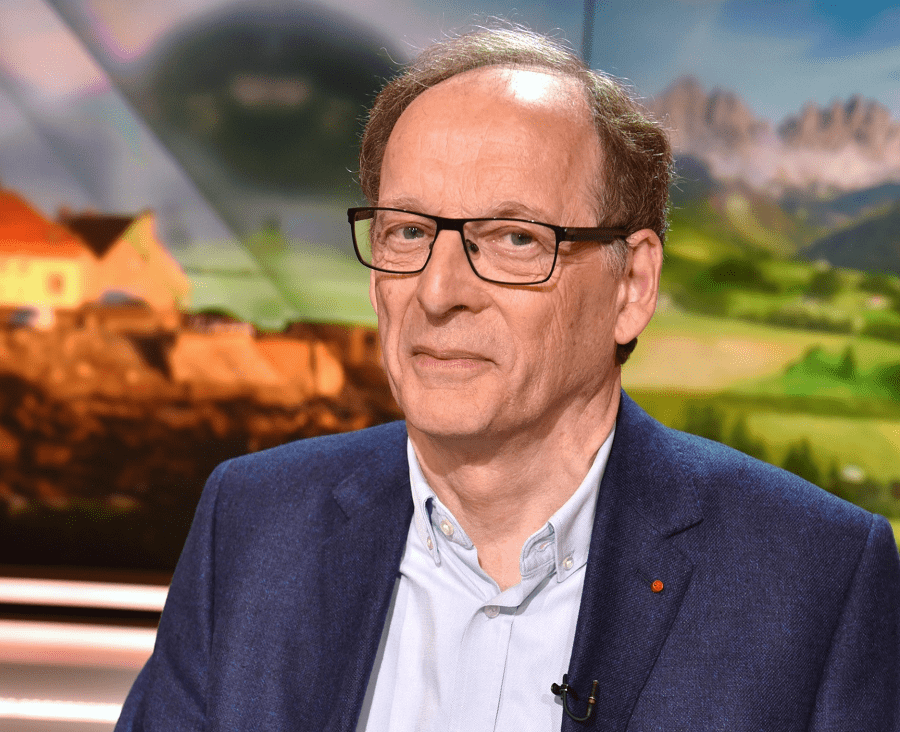Professional dancer from Great Britain, Aimee del Valle, devoted most of her young life to dancing and theater – an industry with which she travelled extensively and encountered a diversity of cultures. Along with dancing, Aimee has been fond of drawing since childhood, believing that these types of art complement each other perfectly. Aimee has lived in the UK, the Netherlands, the USA, Guatemala and France. The diversity of cultures she has experienced along the way have left her with a huge interest in people.
Aimee recently discovered crypto art, a form of digital art whose concept is based on the idea of digital scarcity. She told All Pyrenees about the benefits of digital art over traditional art.
Interview: Irina Rybalchenko
How did you manage to combine dancing and painting?
Alongside art, dance was a huge part of my life growing up. When I was about 17 years old I reached a point where I had to make a choice between becoming a dancer and becoming an artist. A dancers life is limited to their younger years so I chose to move to London and seize the opportunity to become a professional dancer while I could.
When I retired as a dancer at around 28 years old the first subjects I started painting were ballerinas.
Dancers have continued to feature heavily in my artwork. There is one thing I particularly love to paint and that is the emotion felt backstage at the theatre, the excitement and the buzz is like nothing else, I love to recreate that feeling on paper.
Why did you decide to become an artist? What was the basis for your choice?
I suppose I don’t really remember making a conscious decision to become an artist as such. I was always drawing when I was a child, drawing and painting were things I did whenever I had a spare moment. I used to sit and sketch my family while they were having breakfast, or draw dancers from dance magazine and catalogues. Eventually when the time was right in my life it was just a natural progression to become an artist professionally. So I suppose it was a love of drawing people that led me to do what I do, and above all, a love of putting an emotion on to paper.
You are currently living in France. What can you say about the French art market in general?
In France and especially in Paris, the art market is still fairly traditional and treats art with prestige. I feel people are more careful about the choices they make when purchasing artwork here in France, they like to ask questions and know some background before investing in a piece of art, which is nice. It makes me feel that extra bit special when I sell within France.
In your opinion, what are the current trends in modern art? What do you think about the evolution of art in general?
Personally I am glad I was born in this age of the art movement. Rules have gone out the window and I love that because there shouldn’t be any rules in art. I mean, up until not very long ago people frowned upon using the colour black in a painting because technically black doesn’t exist in nature, I totally disagree with notions like this, I love art that breaks the norms and pushes the boundaries.
How do you feel about the situation with this global pandemic? How has the pandemic affected the art world?
There’s no denying that the pandemic brought some very dark moments. But I feel that it has left me more sensitized to my feelings and more empathetic to the feelings of others.
During the worst moments of the pandemic my daily life wasn’t effected that much, being an artist I spend all my working days alone anyway, but being so out of touch with other people did leave me feeling a little lost in my art. My inspiration comes from the emotions, actions and interactions of others, so not being around other people left me a little starved of inspiration.
Thankfully though the market didn’t slow down, people were spending less money on going out and on holidays so they seemed to be spending more time and money focusing on their homes. So needless to say online sales kept at a steady, if not increased, pace during the lockdown period.
How do you generally sell your arts?
Thanks to the wonder that is the internet I am able to sell my art globally. I use online galleries such as Artfinder and Saatchi, as well as other selling platforms like Etsy, to sell to collectors over the world.
I also sell in various galleries and exhibitions in the UK and although the internet is a very powerful tool, there is still that little extra something special about knowing a person has walked into a gallery and chosen my painting.
You develop your professional activity in the world of crypto art. Could you tell us more details, please?
At first I was skeptical about digital art. I had seen that sometimes artists use technology to create artwork that impersonates traditional painting and drawing methods, which I personally don’t find to be very exciting. But when artists use technology to go far and beyond what could ever be created with a paintbrush, that is really exciting.
In fact with digital art the possibilities are limitless. The more I look, the more I discover digital artists whose work is totally captivating. I now use tools like photoshop and procreate to enhance my watercolour paintings to create digital pieces.
The transparent quality of watercolour allows me to layer my paintings into a collage to create a story using three or four images rather than just one.
What is the current NFT market (non-fungible token)? What factors influence the price of digital arts?
At the moment the world of NFT art moves around a fairly small community of artists and collectors. The market is heavily supported by social media which has helped create this feeling of community between artists and collectors. Artists seem to be buying art from other artists like never before. In the traditional art world artists have to work hard to market their own art, but in the world of NFTs, artists are working together to promote each others art.
I’m still struggling to full understand how artists price their NFTs. I think a lot of people take into consideration the amount of time it took to create (or the time it took to learn to create) the artwork, when initially deciding the price for each piece.
I think in general prices are more affordable than with traditional art.
Is it faster, more profitable and more reliable for an artist to sell art through digital platforms? Is it possible today to really make money on crypto art?
In short I think creating art digitally has the potential to be a quicker process. But when you take into consideration the time it takes to learn and understand the various technological platforms for creating art on, plus the financial investment you have to make in order to have the right equipment, it’s a much more complicated process than many people think.
That said the huge advantage when creating artwork digitally of course is the fact that often you have the possibility to undo your mistakes. I can’t tell you how many times I wish had been able to press the « undo » button when painting in watercolour…
You are also free to edit an artwork quickly which of course is much more time consuming, if not impossible, when using physical mediums.
Trends are constantly changing. So I guess we can never say that something is 100% stable. But there’s no doubt that the digital age has opened up a whole new way of buying and trading art that could never have existed before.
I don’t think the market is going to go away now that these new selling platforms have created so many opportunities for people.
The spectrum of prices for NFT artwork is huge. Some artworks start as low as 20 USD while others around 3000 USD, 200 – 500 USD is a fairly common starting price. I’ve chosen to sell my digital art on the platform « Rarible » and the prices will be around 400 USD for a digital artwork. My watercolour pantings are priced roughly from 300 USD to 1000 USD and I sell around 50 – 70 a year.
In what format are your works exhibited on digital platforms? Are we only talking about 100% digital artworks? Or are there original digitized paintings as well?
Initially I was going to digitalise my original paintings with a view to exhibit them online as NFTs, but I have since created digital artworks by using my original watercolours as a base and heightening them using collage and layering techniques to create more dynamic and exciting works.
I don’t think I’ll ever create 100% digital artworks, my heart is set in hand painting, but I do love the ways I can enhance my hand painted work digitally. When I first saw what I could produce with a little digital help I have to admit I fell a little bit more in love with my artworks, and so have created a few brand new collections of artwork that only exist in the digital world.
My next big project is the launch of my NFT collection in January 2022 which I’m really excited about.



